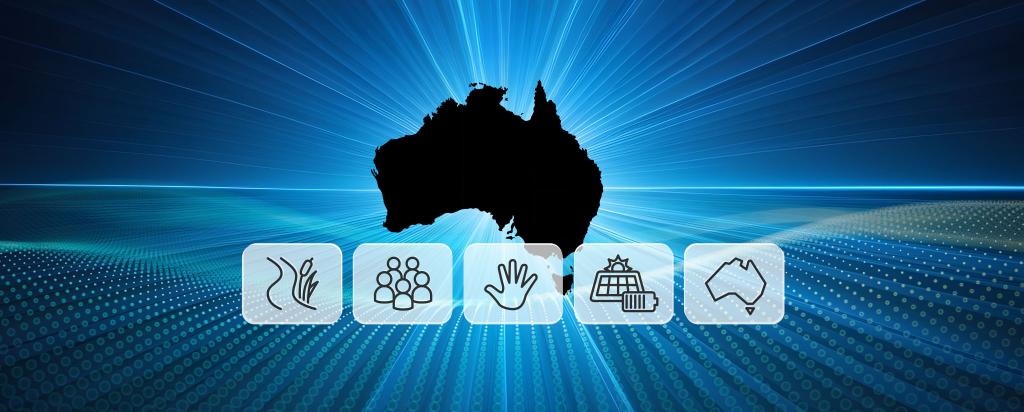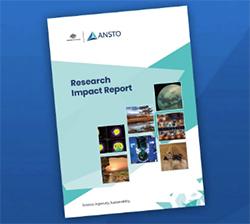

Published on the 13th August 2024 by ANSTO Staff
The Australian Nuclear Science and Technology Organisation (ANSTO) has welcomed the launch of the new National Science Statement and revitalised National Science and Research Priorities by Minister for Industry and Science, The Hon Ed Husic MP and Australia’s Chief Scientist, Dr Cathy Foley AO PSM.
The revitalised National Science and Research Priorities will guide Australian science and research efforts, and help the Australian Government to align its effort and investments in science, research, technology, innovation, and commercialisation system.
The launch comes at an important juncture of Australia’s science calendar, with events being held around the country for National Science Week (10 – 18 August) to showcase and celebrate Australia’s scientists, and the Government Scientists Group STEM Expo in Canberra.
Group Executive for ANSTO’s Nuclear Science and Technology Group, Doctor Andrew Peele said the new priorities identify the changing focus areas of Australia’s science and research landscape and will revitalise and strengthen the sector.
“As Australia’s largest nuclear organisation, ANSTO’s unique capabilities and sophisticated research infrastructure allow us to deliver knowledge, value, and trust in every area of our scientific endeavours,” Dr. Peele said.
“ANSTO’s collaborative research environment brings together industry and academia to tackle some of the complex challenges facing our society today, including in human health, climate change, and sustainability.
“Our people are amongst Australia’s most talented researchers, scientists, engineers, and nuclear experts. Over a third of ANSTO’s workforce are directly involved in scientific research and they work collaboratively with science communities around the world to elevate our nation’s science and research sector.
“For decades, we’ve been honing our research capabilities across the priority fields identified by the Australian Government, and we have a strong track record to show for it.
“Our science and research activities will continue to be guided by and firmly aligned with each of the five new National Science and Research Priorities and we look forward to continuing our ongoing contributions to nuclear science and technology for the benefit of all Australians.”
ANSTO extends its thanks to Australia’s Chief Scientist, Dr Cathy Foley for leading the national conversation and extensive consultations to develop the refreshed priorities and statement.
ANSTO is a member of the Government Scientists Group, a forum established in 2021 by Dr Foley for Australian Government departments and agencies with a science capability, to share information and discuss science and technology issues. For more information, visit the Australia’s Chief Scientist website.
The National Science and Research Priorities and National Science Statement are available to view on the Department of Industry and Science and Resources website.

National Science and Research priorities
A selection of ANSTO’s previous and ongoing science and research activities, which will continue to support the new National Science and Research Priorities, are outlined below:
Transitioning to a net zero future
For the past 15 years, ANSTO researchers have led an energy materials research program, focusing on advancing the development of next generation materials and renewables technologies, which ultimately support a net zero future. This program includes research into batteries – particularly lithium-ion batteries - to enhance and maximise energy storage systems and improve battery performance.
Other focus areas have centred on optimising the materials used in solar cells for superior energy performance. This work includes investigating solutions to develop flexible organic solar cells, which are an easier and cheaper alternative to produce compared to current photovoltaic (PV) solar panels.
Supporting healthy and thriving communities
ANSTO is the largest producer of nuclear medicines in Australia, and a leader in human health research and biosciences.
We use nuclear and isotopic techniques to undertake research and development activities, including characterising diseases and effectively diagnosing and treating cancers and other medical conditions for better patient outcomes. We also support the use of current and future radiotherapies and theranostics.
As part of this work, ANSTO is supporting the introduction of particle therapy, an advanced form of radiation treatment for difficult-to-treat cancers, in Australia. We are also working with research partners to support the development and trial of neutron capture enhanced particle therapy (NCEPT), which provides a novel approach for otherwise untreatable cancers.
Elevating Aboriginal and Torres Strait Islander knowledge systems
ANSTO recognises Aboriginal and Torres Strait Islander peoples as Australia’s first scientists, navigators, mathematicians, and engineers.
ANSTO undertakes research related to Australian Indigenous cultural heritage. Over the past 20 years, we have worked with academic and Indigenous communities to confirm the antiquity of Australian Indigenous cultural heritage, rock art, and artefacts through a range of techniques, including radiocarbon dating.
We are also applying our nuclear expertise to strengthen commercial initiatives of Indigenous Australian communities, through our food provenance project. Our nuclear analytical techniques have been used to authenticate the origin of traditional Aboriginal food products, such as the Kakadu Plum, to protect traditional bushfood industries from unethical marketing practices.
Protecting and restoring Australia’s environment
ANSTO’s nuclear and isotopic techniques are helping to address some of our most challenging environmental problems, focusing on water resource sustainability, climate change, and understanding the impact of contaminants.
Using a range of mechanisms, such as environmental tracing methods, atmospheric radon measurements, and aerosol monitoring, we can identify, quantify, and monitor the scale and speed of environmental changes. This research is helping to improve understanding of past and present climate, our knowledge on the evolution of our landscapes, and how to respond to future changes in climate and the environment – including the impacts of human activities.
Our scientists play a leading role in measuring and characterising fine particles from a range of locations around Australia and the world, including fine particle pollution generated by industry, trucks, coal-fired power stations and cars.
ANSTO’s research in aquatic ecosystems which includes looking at the isotopic composition of living organisms, allow scientists to observe changes in environmental conditions. These changes may involve water availability, habitat modification, the impact of invasive species, or an increase in pollutants.
Building a secure and resilient nation
ANSTO supports nuclear security in Australia, the Asia-Pacific region, and around the world through our international leadership in nuclear forensic science and technology.
Our innovative CORIS360® imaging technology quickly detects the source and location of radiation, which is helping to improve operational decision making for anyone working in radioactive environments, including border protection and national security, defence and military, and radiological responders.
ANSTO’s collaborative partnerships support research required by the defence sector to build capabilities in materials engineering and advanced manufacturing. This work has included developing novel sensor materials for submarines, modelling armour and blast resistance, and analysing critical weld failures.
Research Impact Report
In 2023, ANSTO published its first Research Impact Report, capturing the many ways that ANSTO’s science has delivered real world benefits in recent years.

The report covers a range of research fields, including: industry, human health, agriculture, Aboriginal cultural heritage, climate change and the environment, and the nuclear fuel cycle.
Featuring around 100 case studies of ANSTO’s applications of nuclear science and technology, the report outlines the achievements of ANSTO scientists in collaboration with partners and clients across academia and industry.
Each case study also highlights the correlating national research priorities.
Download the report
ANSTO Media Contact
Melissa Richardson - Media Affairs Manager
Email: media@ansto.gov.au
Phone: +61 (0)499 830 165